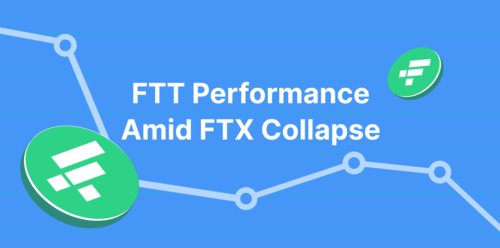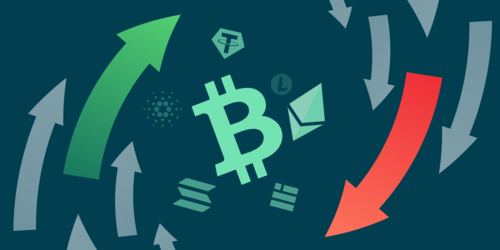Note: FTX is currently not operational.

This article is sponsored by FTX.
In Part One of this series, we introduced crypto derivatives exchange FTX—what the platform is all about, the team behind it, and how you can start trading on it. In Part Two, we will be looking at crypto options, one of the types of crypto derivatives you can trade on FTX. We will dive into what crypto options are, how they work, and how you can start trading crypto options on FTX.
What are Crypto Options?
Options are a type of financial derivative that give the holder the right, but not the obligation, to buy or sell a specific amount of an underlying asset at a predetermined price. They can help hedge positions and protect portfolios, and—if traded correctly—result in outsized trading gains. They are nothing new and have been used in stock markets dating all the way back to the early 20th century..
A crypto option is simply an options contract that has a specific cryptocurrency as the underlying asset. While relatively new in crypto trading, crypto options are quickly gaining popularity. Notably, options provide crypto traders the ability to short the market (i.e. profiting from price declines), something that is still sorely lacking in the crypto space. Thanks to instruments like options, crypto traders can now benefit from both bull and bear markets.
The Two Main Types of Options (and Their Basic Components)
Although ‘exotic’ options exist—particularly in the well-developed mainstream financial markets—they are all general variations on the two main types: call and put options, which are comprised of the same basic components:
-
Underlying asset
-
Strike price
-
Expiration date
-
Order size
A call option is the right to buy an underlying asset—e.g. BTC or ETH—at a certain price (the strike price) by or at a certain date* (the expiration date). A put option is the opposite of a call option; it is the right to sell the underlying asset instead.
*European vs American Options: European options can only be exercised at the expiration date, while American options can be exercised anytime on or prior. FTX’s crypto options are European style.
Call Option Example
Let’s say you buy the following call option (European-style):
-
Underlying asset: BTC
-
Strike price: US$10,000
-
Expiration date: June 30, 2020
-
Order size: 1 BTC
As of Feb 25, 2020, BTC’s price is about US$9,500. The above option grants you the right to buy 1 BTC at US$10,000 on June 30, 2020—regardless of the market price (spot price) at that time. If BTC never breaches the US$10,000 mark at the expiration date, then your call option expires worthless (called out-of-the money).
But if BTC does surge past the strike price, you can exercise the option and buy 1 BTC at a lower-than-market price, generating a profit (the option is then called in-the-money). Of course you’ll still need to account for the price you paid for the option in the first place. Buying call options allows you to benefit from the price of the asset rising.
Put Option Example
Let’s now say you buy a put option with the exact same details except the strike price is at US$9,000. Now, you have the right to sell 1 BTC at US$9,000. If BTC’s price drops below said price then you will have the right to sell 1 BTC at a higher-than-market price, resulting in a gain (if the gain exceeds the option price). Buying put options enable you to gain from price declines in the underlying asset.
Straddle Option Example - Combining Calls and Puts
Say for instance you execute a straddle strategy with a strike price of US$9,000. Assuming the individual cost of a call or put option is US$100 each, the total cost of executing this straddle strategy is US$200. If Bitcoin price moves to US$8,500 or $9,500 by the expiration date, you’ll profit.
In this example, if BTC falls to US$8,500 by the expiration date, the call option expires worthless but the put option has granted you the right to sell at US$9,000, with a profit of US$500. When you net out the cost of executing the straddle strategy (US$200), it leaves you with a net profit of US$300.
Vice versa, if BTC rises to US$9,500 by the expiration date, the put option expires worthless, but the call option allows you to buy at US$9,000, with a profit of US$500. Again, deducting the cost of executing the straddle strategy, this will leave you with a net profit of US$300.
However, if the price of BTC does not move much and ends between US$8,800 or US$9,200, you will suffer a loss because the profit from either the call or put option is not sufficient to cover the US$200 cost of executing the straddle strategy.
Incidentally, FTX’s MOVE contracts work the same way as straddle options, only made more user-friendly. At expiry, these contracts have a value equivalent to the BTC’s price movement over a set period. Traders thus stand to benefit from general price volatility—regardless of direction—with one simple trade.
Who’s Buying and Who’s Selling?
Notice the above examples were about you buying a call or put option. What about the seller? The party that sells the option is the one that is taking the risk. So, if you sold the above call option to someone, that person would have the right to buy 1 BTC from you at US$10,000. You are on the other side of the trade—if the BTC price breaks past the $10,000 mark by more than the option price at the expiration date, you would be at a loss. If it doesn’t, your profit is the option price.
Likewise, if you were the seller of the above put option, you would be obligated to sell 1 BTC to the buyer at US$9,000. If the price of BTC fell below US$9,000 by more than the option price, you would register a loss.
How are Crypto Options Priced?
There are two components to an options price—also called the option premium. They are intrinsic and extrinsic value. When an option is in-the-money, meaning the options buyer stands to gain, the intrinsic value is equal to the difference between the strike and spot price. When an option is out-of-the money, it has zero intrinsic value.
The extrinsic value component is derived from its time value (i.e. time left till expiration) and the volatility of the underlying asset. Because of the high volatility of crypto compared to more mainstream financial assets, crypto options’ extrinsic value tends to be high, which is what makes them comparatively expensive.
While the specific value equation itself comes down to complex mathematical formulae, understand that at the expiration date, a European-style option will only have two possible values: zero (option expires out-of-the-money) or the difference between the strike price and spot price.
How to Trade Options on FTX
Now that you understand the basics of how options work, let’s see how you can begin trading them on FTX. Currently, the only underlying asset you can trade is BTC. First, access the Options tab from the menu bar on the main page.

That will bring you to the following screen, which has two main parts. The first is the Bitcoin spot price (according to FTX’s own index), and your profit and loss from your own options positions. You can also see the total open interest there is for options on the platform and the upcoming expiration date.

The second part shows your orders (requests), the list of requests for quotations, your quotes, and trade history.

There are two ways to open a trade. The first is to look at the ‘All Requests’ block—the list of request for quotations—and respond to one of the open quotes.

Note the word ‘respond’. As you can see, you don’t have to blindly accept their quote, you can ‘negotiate’ by submitting your own offer in response. They have 10 seconds to respond, after which you are free to requote.
Alternatively, you can add to the list of request for quotations (thus waiting for someone to respond to your quote) by clicking the blue ‘Request Quote’ button.

This will bring up the following popup.

You can choose whether to buy or sell call or put options. While you can select which option expiry date you want, note that they are all settled on the same time each day. Keep in mind you have 10 seconds to respond to incoming offers (you will only be shown the most aggressive ones). Also, you can only keep your order open for a maximum of 5 minutes.
If you would like to leave your order open for longer, then you’ll have to also set a limit price. This will leave your order open for a maximum of 1 day. However, if a quote crosses your limit price the system will automatically accept it for you.
As for the ‘Private OTC Trade’ slider, it allows you to offer a quote to a specific user—no one else will be able to view it.
And that’s basically it for how to start trading crypto options on FTX—simple, convenient, and intuitive. The platform exercises in-the-money options for you automatically and posts your trading PnL in US dollars. Remember that regardless of your options expiration date, you will have to post collateral daily, depending on the movement of the option price. FTX calculates this collateral requirement from your entire options book, not individually.
Conclusion: If You’re Looking to Trade BTC Options, Consider FTX
Bitcoin options are a relatively new and exciting development in the crypto markets. Savvy traders who know how to use them skillfully can realize great gains from both the ups and downs of the crypto markets. For traders looking for a simple yet professional platform to begin their options trading, they should make FTX their favored option.
This article is sponsored by FTX.

Ian Lee is a freelance writer specializing in the areas of finance and all things crypto. He also has over five years of experience in investment banking. Follow him at Ian Lee.









 Or check it out in the app stores
Or check it out in the app stores